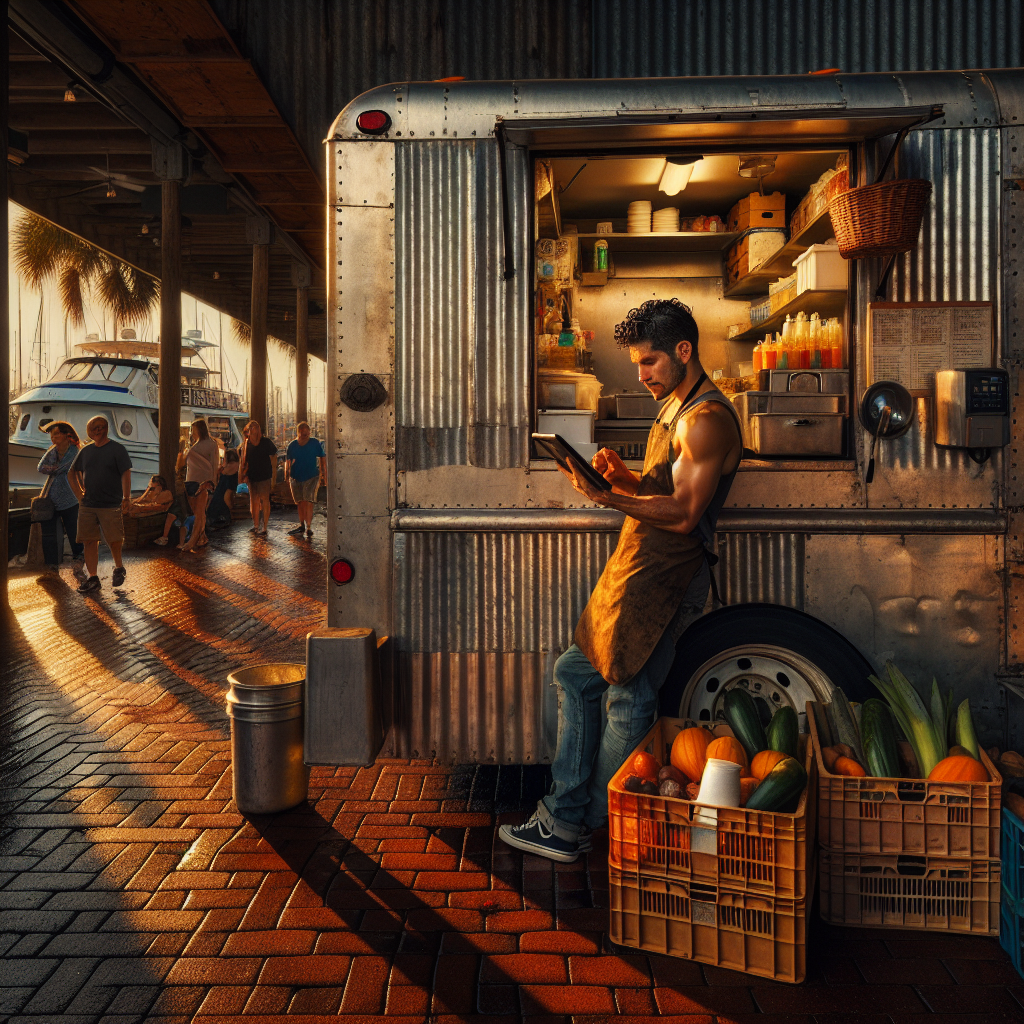AI Demand Forecasting Transforms Sparkman Wharf Food Trucks

For years, operators at Sparkman Wharf have relied on experience, intuition, and a little luck to anticipate lunchtime surges and evening lulls. But consumer behavior—especially in a dynamic hub like Tampa’s waterfront—changes by the hour. In this environment, Sparkman Wharf food truck AI demand forecasting Tampa Bay is fast becoming more than a buzz-phrase; it’s a competitive necessity that can simultaneously curb waste, boost revenue, and elevate the guest experience.
Sparkman Wharf Food Truck AI Demand Forecasting Tampa Bay: From Guesswork to Precision
At the heart of modern forecasting is a blend of computer vision and machine-learning models that ingest footfall, weather, calendar events, and even social media chatter to predict demand at 15-minute intervals. Unlike static “sales history” reports, this technology updates in real time, alerting managers when a cruise ship docks earlier than expected or when an afternoon shower delays office workers’ lunch breaks. For multi-unit vendors, AI-powered sales forecasting for Sparkman Wharf entrepreneurs can harmonize procurement across trucks, ensuring each location is stocked—but never overstocked—relative to predicted sales.
Real-Time Footfall: Reading the Crowd Before They Queue
A network of unobtrusive cameras and Wi-Fi beacons produces Tampa Bay real-time footfall analytics for food vendors. These sensors translate raw headcounts into actionable insights: How many customers are on-site now? How many are gravitating toward the bowling alley versus the beer garden? When demand is projected to spike, chefs receive an automated heads-up on their tablets, allowing them to pre-fire high-volume menu items. The result? AI-driven customer wait time reduction Sparkman Wharf patrons can actually feel—often cutting queues by 25–40% during peak windows.
Cutting Waste Without Cutting Corners
Food waste isn’t just an environmental concern; it erodes margins. AI detects patterns that humans often miss—say, the way demand for plant-based bowls rises after a local 5K or how seafood sales dip when an away game keeps Lightning fans out of Channelside. Pairing those insights with dynamic par levels yields food waste minimization AI solutions for Tampa food trucks that can trim spoilage by up to 30%. Real-time inventory optimization food trucks Tampa operators deploy ensures that prep staff thaw, marinate, or grill exactly what they need—no more, no less.
Integrating Predictive Insights into Daily Operations
Advanced analytics only gains traction when it’s easy to use. Leading platforms integrate with existing POS systems, Slack channels, and even smart thermostats. When projected demand crosses a threshold, the fryer powers on automatically and an SMS reminds the front-of-house team to call in an extra barista. Conversely, a lull prediction can trigger labor reallocation to cleaning or social media engagement. Because the system learns continuously, each cycle refines both the model and the operators’ playbook—an approach championed by every forward-thinking Tampa hospitality predictive analytics consulting firm.
First Steps for Tampa Bay Vendors and Property Managers
- Audit Data Sources: Consolidate six months of sales tickets, staffing rosters, and inventory logs. Even partial data can train an initial model.
- Pilot a Sensor Grid: Deploy a modest camera-based footfall counter at one high-traffic point. Confirm accuracy, then expand coverage.
- Set KPIs: Track reductions in wait time, shrink, and overtime costs. Tangible wins accelerate cultural adoption.
- Align Stakeholders: Finance cares about margins, marketing about experience, and sustainability about waste. AI solutions must speak to all three.
Once early wins materialize, the business case for scaling becomes self-evident. In mature programs, AI-driven recommendations inform procurement from regional suppliers, lock in volume discounts, and even feed back to farmers planting next season’s crops.
The Payoff: Happier Guests, Healthier Margins, Stronger Community
When an average lunchtime queue drops from 12 minutes to six, guests spend more time enjoying live music and less time checking their watches. Trucks that once tossed trays of unsold tacos now redirect savings toward menu innovation. And because footfall forecasts gauge overall Wharf traffic, property managers can coordinate live-event schedules, security staffing, and parking flow—making the entire district more resilient and profitable.
Ready to unlock the power of AI for your business? Contact EarlyBird AI today for a free consultation and discover how our tailored solutions can drive growth and efficiency for your Tampa Bay enterprise.